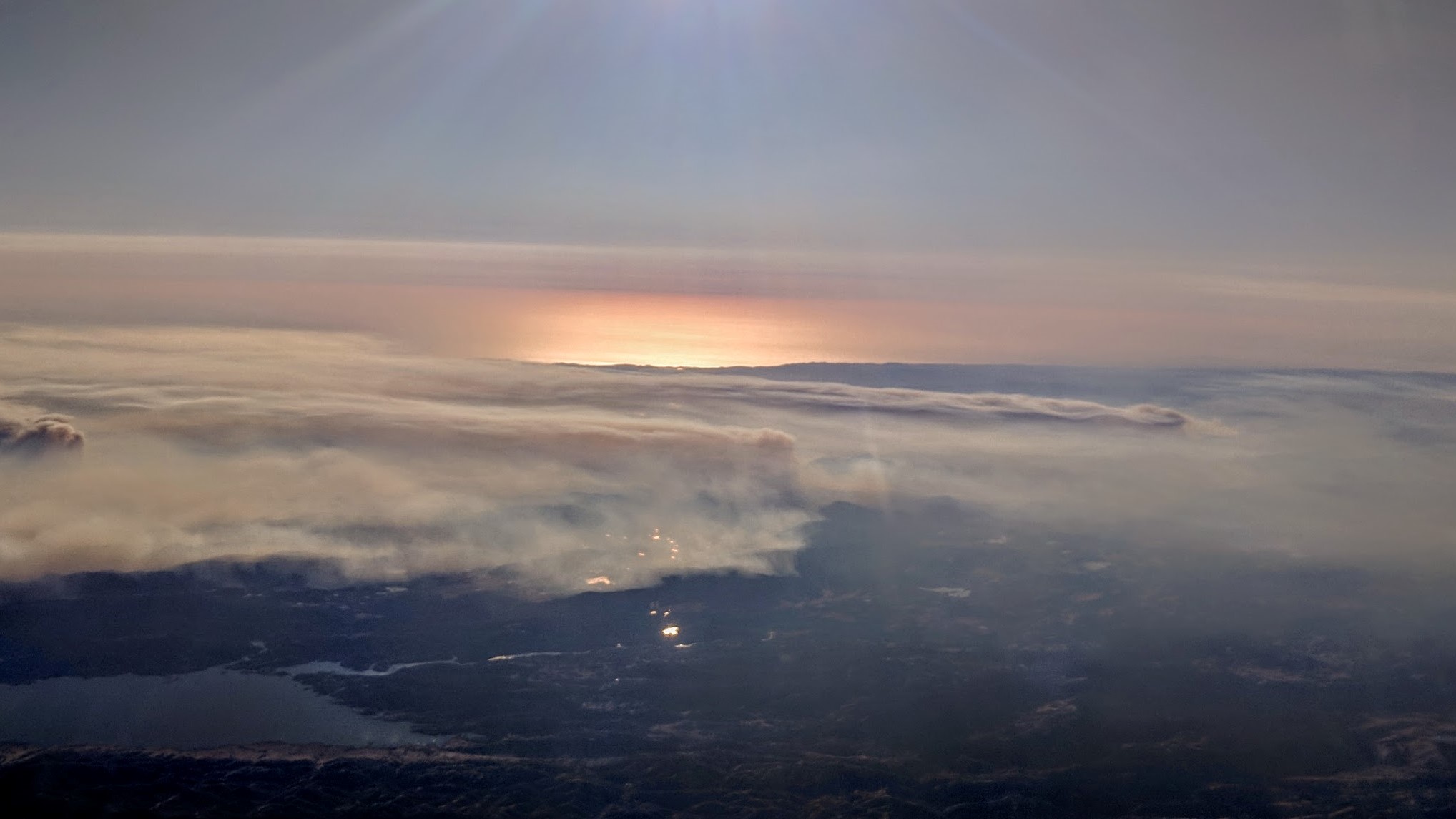
Devasting fires in California’s wine country shook faith in emergency preparedness
On October 8, 2017, a fire broke out in the small town of Calistoga, California at 9:45 p.m. The fire quickly expanded into a blaze that ravaged westward, driven by a wind reported at over 60 miles per hour by 4:00 a.m. The Tubbs Fire, as it was named, burned quickly over a small hill range and the over the six-lane highway 101 into commercial and residential neighborhoods of the city of Santa Rosa at the heart of Sonoma County. Two other large fires in the county started that night with similar catastrophic results. The combined fires altogether eventually burned over 5,000 structures, caused evacuations of 100,000 people (a quarter of the county), and killed 25 people. At the time, it was the largest wildfire event in California’s history.
During the crucial early hours of the events, many people had no warning of the approaching disaster. Jeannie Wdowych lived in the small hill range and fell asleep on her couch watching television, her cell phone nearby and on. Yet what awakened her sometime after midnight was the firestorm shattering the glass doors and windows of her house. She barely escaped, driving for a portion of the way, but eventually having to abandon her car to continue on foot. While she suspects the landlines may have been down, she wished the county would have sent out cell phone warnings. “I never go to bed without a phone like two feet from my face,” Wdowych said.
Kari Kincheloe, a homeowner who lives at the base of the hill range, awoke with her husband John at 1:00 a.m. to the sound of explosions and the hills above ablaze. A retired firefighter neighbor was soon knocking on their door, warning them to get prepared to evacuate. The only official notification she would receive that night came on her cell phone at about 1:15 a.m. in a monotone automated voice message, “Currently there is a vegetation fire burning in your area. The fire department is recommending immediate evacuations. To repeat this message…” She remains shocked at the delayed, information deficient message that didn’t quite capture the gravity of the situation unfolding around her.
As the country recovered from the fires and reflected on its experiences, there was an outpouring of gratitude for all who had heroically helped in the disaster, but public bewilderment and outcry also grew over how some of response could had gone so wrong.
After actions and assessments, flaws found in emergency response
Both the California Governor’s Office of Emergency Services and the County of Sonoma released reviews of the response in the months following the fires, which conducted both to address public concerns and identify improvements for next time.
The choices in warning systems used were a focal point of the assessments. Prior to the fires, agencies within the county had contracted to two private companies to handle warning messages, a separate one for the county and for law enforcement due to concerns about the potential too wide of minimum range and text character limitations of available federal systems. Both were opt-in systems, in which residents had to sign up to receive warnings as opposed to the more universal federal systems which reached all cell phones and devices in an area. The choices caused many residents to not receive warnings who had not known about the opt-in, been confused by needing to sign up for redundant systems, or were visiting the area. Planners may have overweighed the ability to send out complete messages with the private systems over timely and wider audience-reaching messages with the federal system.
Past the choice in warning systems, further problems with the fire response included other communication and coordination issues. Alert personnel had little to no social science training, which resulted in inferior warnings and notifications. The information needs of different residents, especially the Spanish speaking population, weren’t fully considered. There was inconsistent availability of operational checklists and procedural guides, delaying or preventing in-the-moment action. Similarly, pre-drafted alert messages for similar situations were not available. There were communication gaps and unclear organizational structures resulting in lack of situational awareness of coordinators. And, as the event progressed in the few days following the initial firestorm, the county website’s public information resources were not efficient at keeping up with other sources people were turning to, such as local news and social media.
State Assessment (PDF)
Sonoma County After Action
Moving forward
The errors found in the fire responses in Sonoma county, as in any new disaster, hold lessons in improvement for emergency management across sectors from other natural disasters to disease control. Universally, disaster response plans can benefit from continuous review and discussion with “a broad representation of public safety and community stakeholders,” as the state assessment recommended for Sonoma county to shore up its communication problems. This may have identified stakeholder groups that were being missed with the alert systems used in the fires. Expectations have also changed over the generations. Daily or delayed updates may no longer be enough in the time of Twitter and Facebook, and the public should be engaged to align their communication expectations with the capabilities of emergency management.
In rapidly developing disaster situations, there will be less resources to ensure needed quality in communications and response structuring. Easy-to-follow protocols and pre-scripted messaging are key to any response to ensure in-the-moment consistency and prevent the confusion and coordination problems which were found in the assessments.
Finally, Sonoma County had never experienced a disaster to the scale of the 2017 fire, which will hold true for many areas which will experience a major disaster in the future. Emergency management personnel need to practice and prepare more than ever before for both prior challenges and emerging challenges that changing global conditions may bring.
